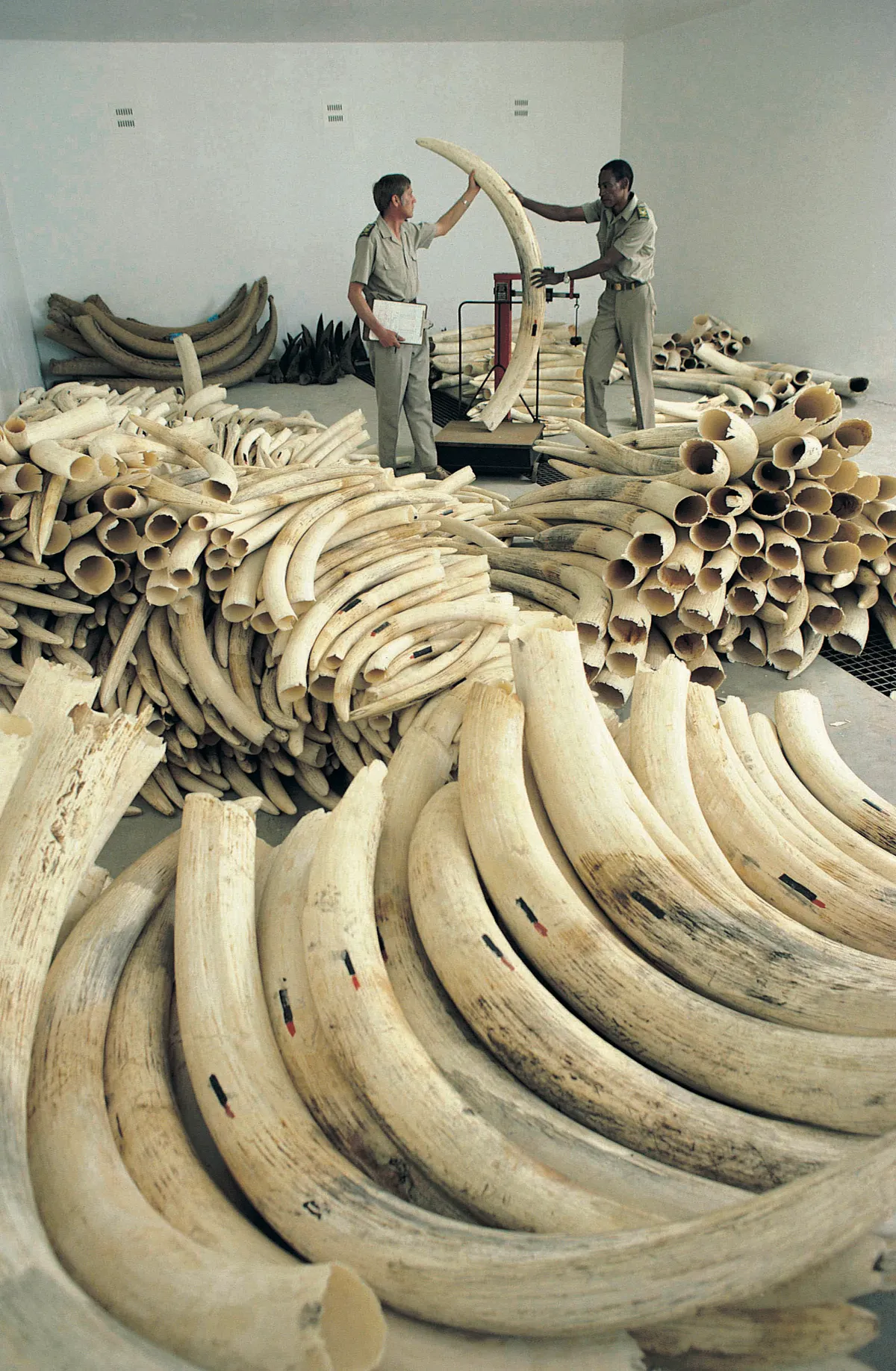List an elephant's most iconic characteristics and tusks should be right behind the long trunk, and arguably above big ears and thick skin.
Tusks are elongated teeth that grow continuously and are used to dig for food and nutrients, clear paths through vegetation, mark or remove tree bark, and for fighting between males. The tusk can serve those diverse purposes thanks to the properties of its main material, ivory, which makes it strong and stiff, hard and tough.
Ivory's impressive properties are attractive to humans. Traditionally used to make art and ornaments of cultural value, it's become a valuable status symbol. But as studies have shown, demand for ivory has helped to fuel a multibillion-dollar wildlife trade that encourages illegal hunting. And now new research has shown that this may also have left an evolutionary mark on elephants.
A recent study by biologists at Princeton University looked at African savannah elephants in Mozambique's Gorongosa National Park. During a civil war that lasted from 1977 to 1992, more than 90 per cent of large herbivores were slaughtered, including elephants: the population dropped from more than 2,500 individuals 50 years ago, to less than 250 in 2000.
And while the population decreased, the proportion of female elephants without tusks increased: comparing historical videos to modern footage showed a rise from 19 per cent to 51 per cent. Among females born after the war, one-third are tuskless.
Read more fromReality Check:
- Are we becoming more narcissistic?
- Perineum sunning and coffee enemas: Why are celebrities seemingly obsessed with wellness fads?
- Why we need a hydrogen power network to reach net-zero carbon
In mammals, sex is dictated by a pair of chromosomes: females are XX, males XY. Because nearly all male elephants have tusks, the Princeton biologists suspected that the tuskless trait was linked to the X. If inheriting the genes for making tusks is lethal when inherited on a male's lone X chromosome, a female with two Xs could be spared if they inherit one normal copy of the gene. The pattern of genetic inheritance for the tuskless trait was consistent with that hypothesis.
After searching the genomes of 11 tuskless elephants for signatures of recent evolution, the biologists found one relevant DNA sequence on the X chromosome: AMELX, a gene that helps produce enamel and cementum, two minerals that coat tusks and teeth. Mutations that delete the equivalent gene in humans can cause an inherited disorder where women lack 'maxillary lateral incisors', the teeth that become tusks in elephants (the ones next to the canines).

As 1 in 10 female elephants have one tusk or none, the trait must also be influenced by a second genetic factor. By comparing DNA from tusked and tuskless elephants, Princeton's researchers then identified MEP1a, a gene involved in producing dentin - the core mineral in ivory.
So at least two genes for tusks have evolved rapidly in response to poaching. As tusklessness existed before the Mozambican war, the trait probably isn't caused by new mutations, but by rare genetic variants that are now more common in the gene pool. Driven by the harvest of elephants for ivory, the tuskless trait has become more prevalent in the population as females born without tusks are more likely to survive and reproduce.
Though humans are technically part of nature, calling that process 'natural selection' is vague. The evolution of tuskless elephants is an example of 'harvesting selection' or 'human-driven selection'.
Despite being useful as multipurpose tools, that fact females can cope without them would suggest tusks aren't essential for survival. Indeed, among the three living relatives, females of the forest and savannah species of African elephant tend to be tusked, but female Asian elephants might only have short protrusions called 'tushes'. Tusks don't seem to be vital to Asian males either: in Sri Lanka just 10 per cent are tusked.
Read more about elephants:
- How intelligent are elephants?
- Why do elephants have such wrinkly skin?
- How many people would it take to lift an elephant?
One explanation is that 3,000 years of hunting and domestication favoured the loss of tusks in Asia, whereas African elephants have only recently been exposed to human-driven selection.
So yes, elephants are losing their tusks. But while it's tempting to focus on how humans are altering another animal's anatomy, it's difficult to untangle the feature from the dramatic drop in population size: according to figures from the World Wide Fund For Nature, African elephants numbered 3-5 million in the early 20th century, today there are just 415,000. While separating cause and effect isn't easy, what if there are now fewer elephants partly because more are tuskless?
The issue extends beyond elephants. The world's largest living land animal will bulldoze its way through habitats, which can trigger a transition from forest to grassland and change the local composition of species. Elephants are 'ecosystem engineers' whose behaviour has knock-on effects. Compared to the human-driven selection that's driving the loss of tusks, which has taken mere decades, the ecological functions played by elephants can't be restored quickly. As the Princeton biologists conclude: "Restoration of these functions may require disproportionately longer time scales than the initial selection event."
- Visit the BBC’sReality Checkwebsite atbit.ly/reality_check_or follow them on Twitter@BBCRealityCheck